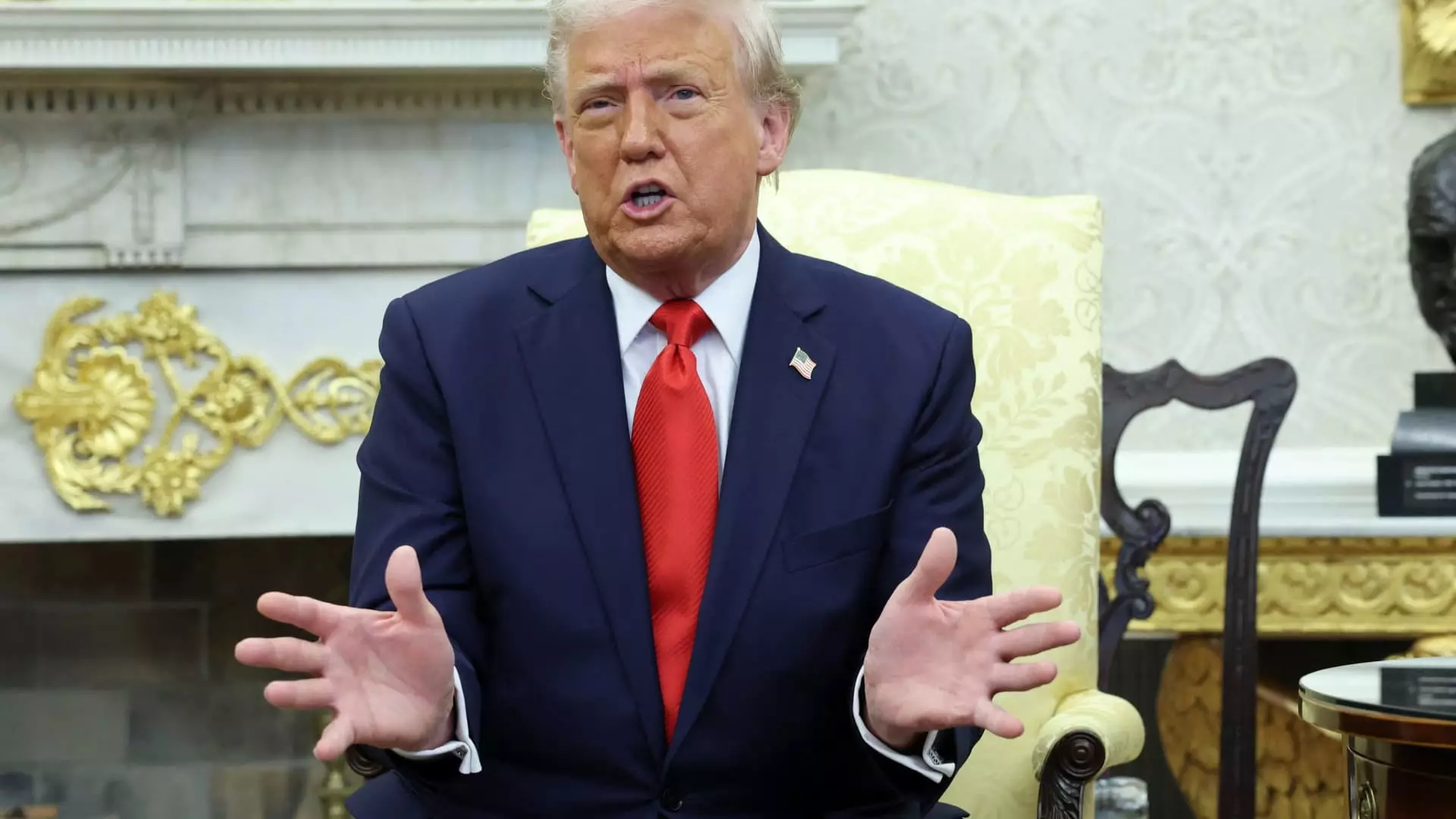In an era marked by uncertainty, where legislative intentions hang in the balance, it seems Wall Street has thrived, boasting unparalleled profits from stock trading. The first quarter of 2023 saw a staggering increase of 33% in equity trading revenues for the largest U.S. banks, totaling an extraordinary $16.3 billion. Such numbers have prompted exuberant descriptors from analysts calling the activity “spectacular” and “extraordinary”, yet a deeper analysis reveals a sobering truth. What are we celebrating in these robust earnings, and what implications do they carry for the average American?
The billion-dollar stock figures tell a compelling tale of volatility-driven profit, but they do not fully encapsulate the precarious state of the economy. Banks such as Goldman Sachs, Morgan Stanley, and JPMorgan Chase rode the waves generated by political upheaval under then-President Trump, yet this rise comes at a cost. It reflects a system that profits from instability rather than one that fosters sustainable growth and employment. Elevated trading revenues are a troubling indicator that our economy is increasingly favoring speculation over real investment in job creation and infrastructure—vital areas for a truly healthy economy.
The High-Stakes Game and Its Survivors
This windfall for financial institutions marks a significant twist in expected outcomes. Many anticipated that Trump’s presidency would herald a golden age for deal-making, but instead, we witnessed tepid merger activity. Investment banking has stagnated as companies hesitate to make bold moves amid a fog of uncertainty. In contrast, trading floors buzzed with activity; desperate for guidance, professional investors were compelled to adapt to ever-changing market narratives.
At the heart of this dynamic is an unsettling reality: the financial sector has evolved to be more responsive to short-term fluctuations rather than long-term stability. With volatility as a constant, trading desks have reconfigured their operations to leverage even the slightest market shifts, now profiting whether stocks soar or plunge. While this agility appears advantageous for the banks and their shareholders, it casts a shadow of risk over the broader economic landscape. In a country where hard-working citizens are grappling with job instability and rising prices, such profits underscore a disconnect between Wall Street and Main Street.
Profit Amid Despair: The Toll on the Real Economy
While major financial firms bask in their trading success, regional banks and smaller institutions find themselves squeezed. With limited trading operations, these banks face mounting pressures as loan growth stagnates amid rising defaults and uncertainty in consumer confidence. Recently, JPMorgan warned of a projected uptick in unemployment rates, a factor that could have reverberating impacts across sectors and communities striving to recover from economic strain.
It’s a troubling irony that while financial behemoths shine on stock trading charts, everyday Americans witness heightened job insecurity. The disconnection between inflated bank profits and the stagnating economy breeds cynicism among the populace. How can we trust an economic model where exhilaration is derived from market churning, while many face the harsh reality of unstable employment and rising costs? It illustrates a systemic issue; one where Wall Street’s success is often a reflection of gambling with market volatility rather than fostering genuine growth.
Factors Fuelling the Surge: A Call for Scrutiny
The turbulence instigated by Trump’s tariff wars and trade policy shifts certainly contributed to this extreme trading activity. From the imposition of tariffs on imports to rousing trade disputes, such moves keep the marketplaces guessing, incentivizing institutional investors to react rather than plan. While the banks line their pockets, the political and economic strains on industries threaten to undermine the very fabric of daily life for millions.
A primary concern for voters should be whether these markets—both bullish and bearish—serve broader societal interests or merely the investments of the elite. For the CEO of Morgan Stanley, the vibrancy of the trading desks represents opportunity, while for the average citizen facing dismal job prospects, it appears as yet another instance of wealth accumulation without regard for those left behind. This reflection is crucial as we consider the aspects of our financial systems that prioritize wealth generation for a few over the economic welfare of the many.
A Wake-Up Call
The remarkable profits emerging from Wall Street’s equities trading highlight systemic flaws within an economy roiled by short-term thinking and speculation. The reality is glaring: the financial sector must not only rethink its role in economic recovery but also grapple with its responsibilities to the populace that sustains its existence. When the very foundations of economic growth rely on the volatility of markets, we ought to question whether we are truly headed toward meaningful, sustainable progress or merely a cycle of feasts for the few while many go hungry.


Leave a Reply